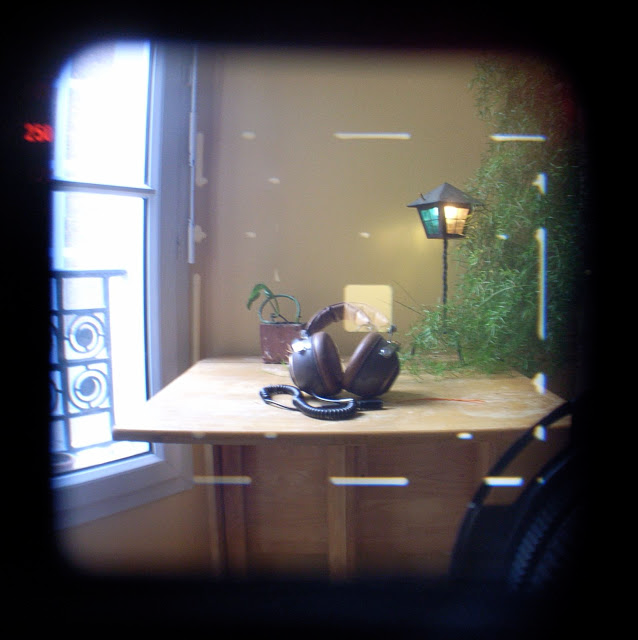A look at\Wthrough finders
Shots taken through the finder of some my cameras
Looking at & through camera finders
Liking or hating a camera finder feels like a major criteria in the experience, the choice to buy, use or sell a camera. More than the technical qualities, my experience of vizualizing the subject the if and how.
I have come to like the cameras presented below and sell back some I could not get used to, mostly because of their annoying viewers (Nikon D90, Ricoh 500 GX, …).
1. Lubitel 2 : a finder you will not use.
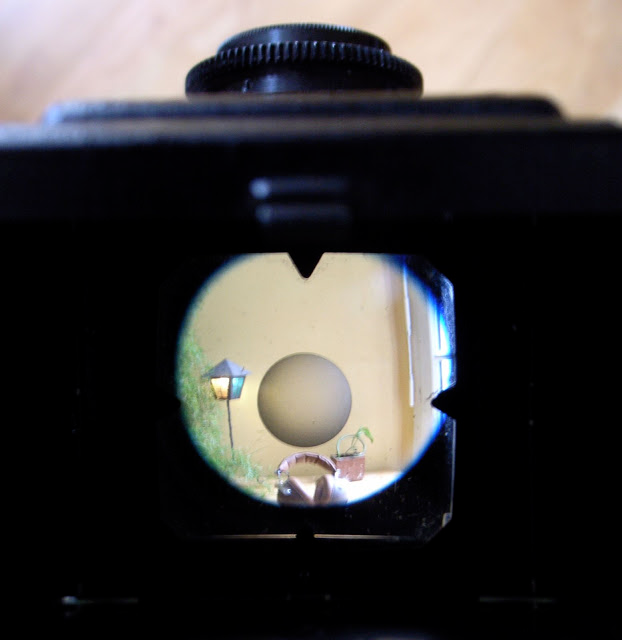
The Lomo 1954+ Lubitel 2 is a twin lens reflex (think Rolleiflex , but well, not as good) featuring a waist level brilliant finder , with a central spot for focusing purpose.
This finder may be the worst I ever used, however since the Lubitel is such an incredible experiment-friendly camera, I usually set a aperture to 8~11 for a deep depth of view, a fixed focus distance and shoot it with a cable shutter release.
Yep, not so original if you know Markus Hartel street work.
This photo emphasizes one of the major problems of this finder : the difficulty to actually see what you are shooting at. Rolleiflex and most TLR cameras feature a large and readable, mate focusing screen. They are not as bright as the Lubitel's but you can actually use them.
2. Nikon F3 : hmmm, large !
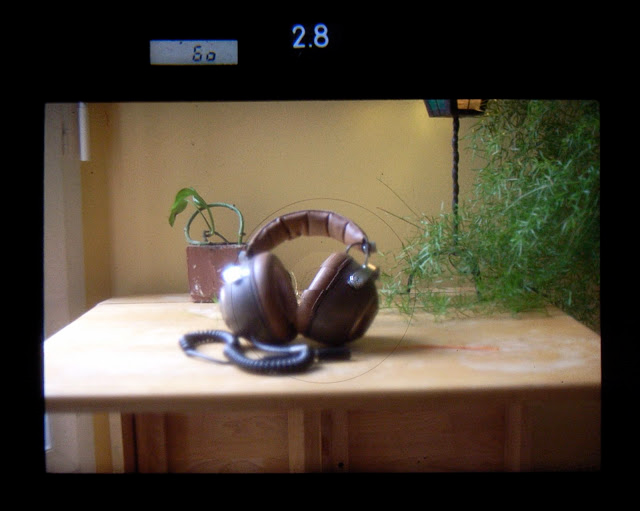
I bought a Nikon F3 when I started buying nice lenses for a Nikon D90 , in order to replace a Canon AE-1P . The Canon AE-1 have a exceptional large and bright finder and the Nikon F3 proudly competes.
This finder allows you to frame precisely (100% coverage), to focus and adjust metering (aperture is read from the lens, through a mirror and speed on a small LCD display. Previous Nikon manual focus camera -such as the FE or FM- offered speed reading with two little arrows on the left hand side. Vintage but actually more practical and reliable than the LCD screen.
This viewfinder is a real pleasure to use, especially after using a small sensor digital camera, such as the Nikon D90. The large size of the viewer provides a better view of the subject, a better depth of field preview, … well bigger is better here. As looking "through the lenses" (and the mirror and the pentaprism) provides you with direct close-up to your subject, if you are shooting portraits from a distance for instance, allowing you to quietly elaborate to proper setting for the shoot, somehow isolated from external annoyances.
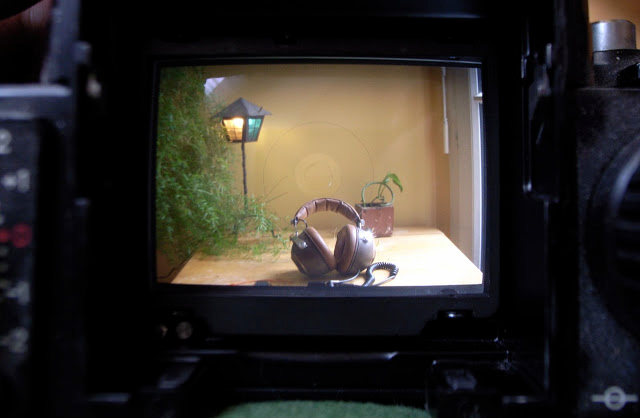
The Nikon F3 offers many different focusing screens as shown on the camerapedia page. Mine has the standard central split-screen rangefinder with surrounding microprisms.
More than focusing screen, you can also change the whole pentaprism viewfinder for a "sport", "architecture", … one. You can then use it as a waist level finder camera. The fine grain image produces feels a bit magical and put Apple Retina to shame! When holding the camera at waist level, you can achieve some interesting perspective shots, while going unnoticed and still having a clear sight of your subject. I have really enjoyed this feature at public events or intimate atmospheres.
3. Nikon D700 : finally
I bought a digital small-sensor Nikon D90 in early 2009 and sold it in late 2010, waiting for Nikon to release a D800 that would make the full frame D700 affordable. Well, you know, Fukushima … D800 has just been released a few weeks back, a year and a half late. Grr.
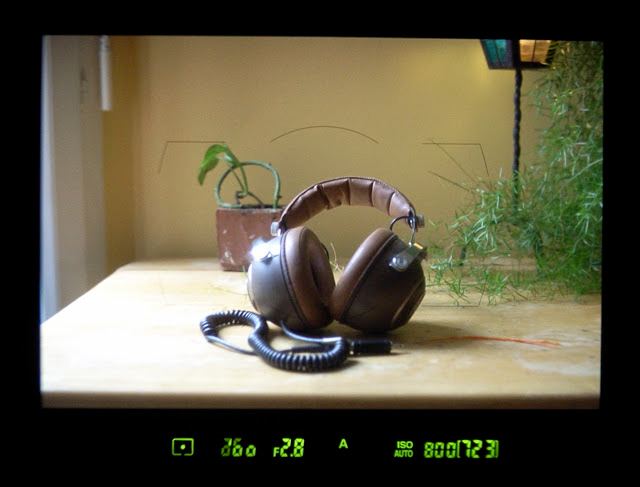
The D90 was a nice camera all over, which I really enjoyed to use . Except for the tiny finder you had to suffer when going to non-full-frame digital camera. Not only your trusted 35mm went 50mm, but your finder won't let you see cherries on a cherry tree. Grr.
I recently bought a Nikon D700 to shoot some horse sports ( driving and jumping mostly, experimenting panning, short distance, etc). It's viewer is bigger and better than the D90's, of course and justifies for me the move to full frame. I hope Nikon D600 won't just be vaporware, but a really affordable fullframe camera for non-pro people who like their old film camera and large viewfinder.
As I mentioned earlier, I use my digital camera for fast moving things, to prepare a film shooting work or stuff, well, I don't care too much about. For now, the Nikon D90 tiny viewer made me think of digital photography as expendable, to-throw-away-later. Nothing clearly logical, but the framing/shooting experience with the D700 broaden its field of application.
3.1. Mamiya 6 MF : large rangefinder
You can see the Mamiya 6 MF somehow like a middle-format Leica M6 : a large high-quality rangefinder camera using 6x6 films. This M6 MF comes with a set of three kick-ass lenses only : 50mm, 75mm and 150mm.
[Mamiya 6 MF]
The viewfinder provides the photographer with the ability to frame (using, well, frames matching the selected lens), to focus (using a central large rangefinder spot) and read speed values on the left hand side little LEDs. You can't read the aperture value :/
The finder is huge and covers just a little more than what the widest of the three possible lenses is capable to cover (approx. 0.7x magnification).
Rangefinder cameras are very practical to operate on dim light conditions as the central rangefinder patch receive a lit more light than the rest of the image, making it easy to focus quickly and precisely.
When using 75mm or 150mm, the framing lines covers only a part of the viewfinder extents, allowing you to see what's around your picture, to anticipate. That's why I prefer the Mamiya 6 to the Nikon F3 as a travel camera. While unarguably bulkier, it also feels more practical for street and landscape photography. It doesn't provide the "isolation" from the subject environment, on the contrary. On the Mamiya 6, the finder is also big enough to "suck you in" the subject.
Comparing this camera and Leica viewfinder is a slippery slope of course. One can safely say it's at least as good but bigger.
Oh, yeah, it's polarized and the picture doesn't really render justice to the Mamiya 6 finder. Beware of the nice looking skies \^\^.
4. Ricoh GRD : bright!
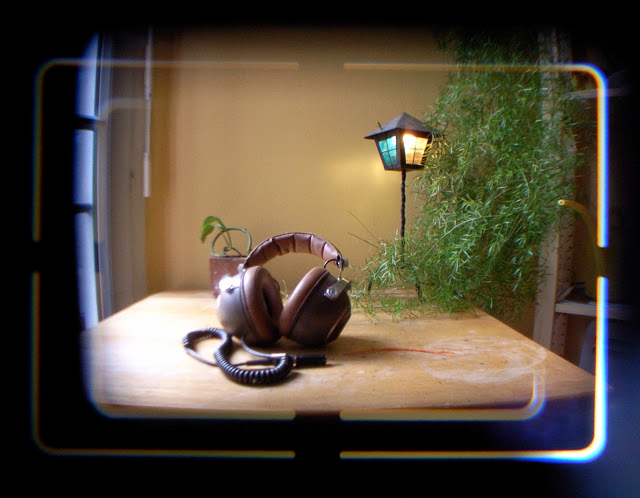
I took all the pictures above with a small Ricoh GRD point&shoot. This little fixed 28mm focal camera always comes in handy.
It comes with an external viewfinder which really helps film photographer as me, who don't really like framing with the rear LCD screen. The finder is large and bright. It's suited for 28 to 24mm focal lengths.
Au revoir !





